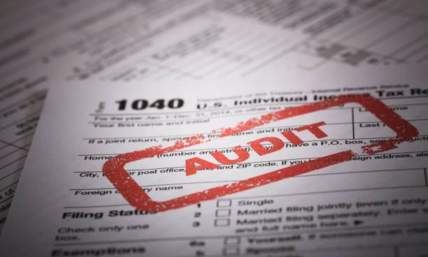What Are Payroll Codes?
Knowing how to read your pay stub is very important. It doesn’t just contain your wages and hours but also breaks down more information about how you earned your pay and enumerates the reasons why you may have deductions from your wages. You might be looking at your pay stub and wondering how it all adds up, and also what those little codes you can see on there are for. That’s where this guide comes in.
The codes you can see on your pay stub are payroll codes. Your organization can create its own payroll codes for internal processes, but there are some common ones that you will see across pay stubs that are very important to understand. We’ll break them down by type so that you can read your pay stub confidently and make sure that you know where all of your pay is coming from, and where it’s going.
Also read: Working On Payroll Jobs
Why You Need To Know About Payroll Codes
It’s important to have visibility on your earnings for a number of reasons. For one thing, it’s essential for when you are compiling your tax return, and a basic understanding of how your pay stub works makes that process a lot easier. For another, it’s extremely useful to be pay -stub-literate in any dispute over pay with your employer, as you are able to drill down into your earnings much quicker if you know what you’re looking for. It’s also handy for budgeting, as you can see where your deductions are going, for example into your 401K, and any of your other payroll-deducted savings or payments to employee benefits.
It’s just good practice to have a decent understanding of this document, and once you get your head around the commonly used payroll codes you’ll start to see how your monthly paycheck works a lot more clearly.
Also read: Who Is Responsible For The Payroll?

Earnings Codes
Let’s start with the money coming into your pay. All earnings have a code attached to show what type of work and/or work period they pertain to. This covers everything from standard working pay to bereavement pay, overtime, holiday pay, and more. Depending on the institution issuing your pay stub you may see different codes, but these are some of the most common ones that you will encounter.
-
BRVMT - bereavement pay,
-
CNT Pay - your contract pay, or salary.
-
FMLA - pay covered under the Family and Medical Leave Act.
-
Hol - holiday pay.
-
Jury - jury duty pay.
-
OT - overtime pay, often followed by the rate at which your overtime is paid.
-
Reg Pay - this code is often used for hourly pay.
-
TuiReimb - tuition reimbursement (for when you undertake training that you have to pay for up front, but is reimbursed by your employer).
-
Vac - vacation pay.
Payroll Codes for Deductions
As well as what’s coming in, your pay stub also includes a wealth of information about where your pay gets deducted before it reaches your wallet. These break down into a few different areas, which we’ll cover in more detail below. Basically, your deductions fall under three categories. You’ll see codes which pertain to your deductions for tax at Federal and local levels, codes for pre-tax deductions such as 401K and healthcare payments, and codes for post-tax deductions such as child support and pay garnishing. We’ll go through them in that order.
Also read: What Are Employment Verification And Proof Of Income Documents?

Tax Deduction Payroll Codes
These codes show you where your pay is being deducted for tax purposes. This covers Federal and State taxation, as well as any local taxes that you may be liable for. Some of the more common tax deduction codes you’ll see are listed below.
-
FICA - Med/FICA - SS - You pay two contributions from your paycheck under the Federal Insurance Contributions Act, one for Medicare at 1.45 percent and one for social security, which varies year-to-year.
-
Fed - this is your Federal tax withholding code. You may also see it written as FWT, FIT, or FITW, which stands Federal income tax withholding.
-
St Tax - this code marks your State tax withholding. As with the Federal tax withholding code, it can also be written as SWT, SIT, or SITW.
-
Local tax - this last code applies to any local taxes that are liable for payroll deduction. These vary from location to location, so if you’re relocating for work, or have pay stubs from different jurisdictions, you may see a variation here.
Pre-Tax Deduction Payroll Codes
Many important non-statutory deductions take place at the pre-tax stage in your payroll process. This is where your payroll contribution investments are deducted, and where you’ll see the line items for many of your employee benefits such as dental plans and medical insurance, as well as disability allowances. We’ve listed some of the more frequently used ones here.
-
401K - this is the code for your 401K payments on your pay stub. You may also see a code for Ret, which stands for retirement.
-
DCR/Den - depending on your dental plan, you’ll see one of two codes. DCR refers to dental care reimbursement, for plans where you seek care and have it reimbursed as an expense by your employer. Den or Dental refers to contributions to dental insurance premiums.
-
MED/INS - this code marks your deductions for medical or insurance premiums. You may also see HCR, which is the code for health care reimbursement, if you can have your healthcare expenses reimbursed by your employer.
-
FSA/HSA - these two codes are for spending accounts that are deducted at the pre-tax stage, with FSA standing for flexible spending account and HSA standing for healthcare spending account.
-
LTD/STD - these codes refer to long-term or short-term disability withholdings from your pay.
-
VIS - this code refers to vision premiums, and can also be marked by the word vision.
Also read: 10 Things You’ll Need from Each Employee to Achieve Efficient Payroll Processing
Post-Tax Deduction Payroll Codes
There are some other codes that you might see on your pay stub which refer to deductions that occur at the post-tax stage. These are generally codes for penalties incurred for things like child support and bankruptcy. Here are some of the codes you’re most likely to come across.
-
Bankrpty - fairly self-explanatory, this code covers any deductions made under the conditions of a bankruptcy.
-
CHD SU - this code refers to deductions made for child support.
-
Garn/Gard% - these two codes refer to payroll garnishing either at a flat rate or on a percentage basis.
-
StdnLoan - this code shows your student loan deductions from pay.
-
TX Levy/IRS Levy - these two codes account for levies imposed by tax authorities or the IRS.
Also read: What Are The Ways To Better Manage Payroll In Your Business?

Key Takeaways
We’ve run through the most commonly used payroll codes which may appear on your pay stub. Having a working knowledge of these codes enables you to better interrogate your payroll documentation, giving you better insight into how your pay in your pocket is calculated.
Take note of the fact that payroll codes can also be generated by any organization to cover a wide range of deductions and earnings. If a payroll code appears on your pay stub that you don’t understand, check in with your company’s accounts department or your own accountant. They will be able to talk you through what it means and any effects it may have on you.
Keep these codes in mind when you’re looking at your pay stub, be it during tax season, a dispute with your employer, or just when doing your own personal accounts, and you’ll have a much better idea of how your pay stub works. You can easily create an online pay stub using our online pay stub maker which is simple to use.















